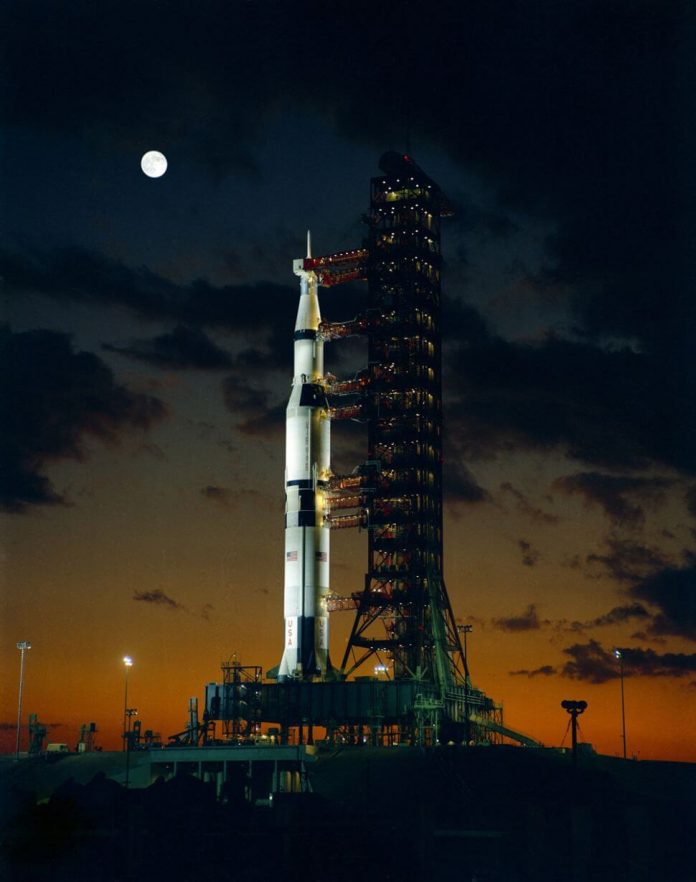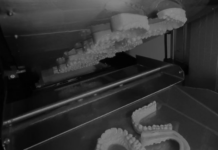NASA’s incredible Saturn V rocket propelled dozens of humans toward Earth’s moon. The rocket’s first flight, for the Apollo 4 mission, took place 50 years ago, on Nov. 9, 1967.
The rocket passed its first integrated test with flying colors and was cleared to send humans to the moon after only one more test flight. The Apollo 11 mission, which was launched to space on a Saturn V, safely landed two people on the moon in 1969.
Here are 5 surprising facts about the Saturn V rocket and its place in history, including how it stacks up to NASA’s new Space Launch System (SLS), the next NASA rocket intended to bring people to the moon.
It burned more fuel in 1 second than Lindbergh used to cross the Atlantic
The crew of Apollo 8, the first humans to circle the moon, received a special visit from Charles Lindbergh prior to the mission launch in December 1968, according to the Robert Zimmerman book “Genesis: The Story of Apollo 8” (Dell, 1998). Lindbergh was the first pilot to cross the Atlantic Ocean solo, which he did in 1927 in his aircraft the Spirit of St. Louis, which is on display today at the Smithsonian National Air and Space Museum in Washington, D.C.
Lindbergh and the astronauts, all hailing from aviation backgrounds, talked about fuel consumption. The first stage of the Saturn V rocket, using five F-1 rocket engines, produced 7.5 million lbs. (3.4 million kilograms) of thrust and was used during launch for about 2 minutes. It gobbled up 20 tons (40,000 pounds) of fuel per second. Lindbergh’s little aircraft used 450 lbs. of fuel to get across the Atlantic. Thus, the men estimated that in just a tenth of a second, the Saturn V would burn 10 times the amount of fuel Lindbergh used for his entire trip.
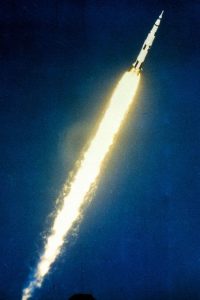
It went from paper design to flight in 6 years
Rocketeering is a notoriously hard business, and it was especially difficult in the 1960s. Formal development on the Saturn V began in January 1961; it was then called the C-5 rocket.
The rocket’s development was led by Wernher von Braun, a German-born engineer who wanted to test each part of the rocket separately. But NASA was planning to land humans on the moon before the end of the decade, so George Mueller — NASA’s director of the office of manned space flight — ordered a test of the entire rocket at once.
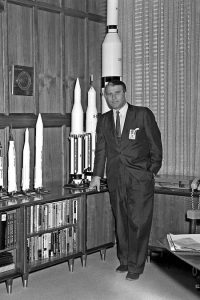
Though Von Braun was reluctant, the Saturn V made its first uncrewed flight on Nov. 9, 1967; the rocket met all major goals. A second test of the Saturn V, for the Apollo 6 mission, took place in April 1968. Just a few months later, in December 1968, another Saturn V rocket took the Apollo 8 crew into space on the first stage of their moon mission. The first moon landing took place on schedule, in July 1969.
It had 13 (mostly) successful missions
While the Saturn V was a complex machine, the rocket had a remarkable safety record. The Saturn V successfully flew 13 times, including 10 times with people on board. While some of these launches had flaws, in almost every case, the Saturn V sent its cargo safely into orbit. However, the Skylab space station was severely damaged during a Saturn V launch — more on that in the next slide.
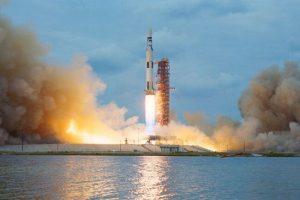
Perhaps the most famous test of Saturn V‘s durability came during the launch of Apollo 12 in 1969, when lightning struck the vehicle a few moments after liftoff. Luckily, although the astronauts saw some strange warning lights from inside their spacecraft, there was no major damage, and they safely proceeded to a landing on the moon’s Ocean of Storms.
You can see Saturn Vs in museums
The Saturn V rocket was intended to be disposable. Each rocket’s mighty first stage, after hurling humans toward space, detached from the rest of the rocket and fell into the ocean. NASA intended to leave those spent rocket stages there, but Amazon founder Jeff Bezos (who also runs the spaceflight company Blue Origin) launched expeditions to recover the stages.
“They are dissolving away in the saltwater. We should go get them and put them in a museum,” Bezos said in August 2017, describing his thoughts when he launched the recovery initiative. He was successful; his mission recovered several pieces of Saturn V rockets at 3 miles (4.8 km) deep, including parts that were on the Apollo 11 mission.
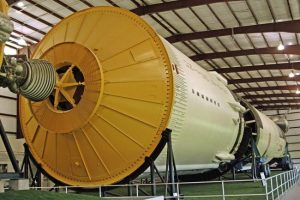
Some of these pieces are on display in museums. Unused complete Saturn V rockets are also on display at NASA’s Johnson Space Center, NASA’s Kennedy Space Center, and the U.S. Space & Rocket Center in Huntsville, Alabama.
Saturn V is taller than the Space Launch System
Witnesses to Saturn V rocket launches described the incredible roar, something that even the space shuttle’s rocket couldn’t equal when it sent people aloft between 1981 and 2011. But spectators will soon have the chance to see the launch of another worthy moon-seeking rocket, the Space Launch System, whose first test launch is expected to happen around 2019.
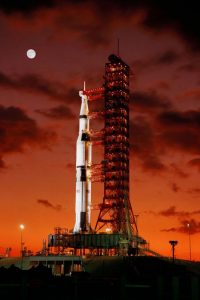
Like the Saturn V, SLS is expected to be capable of sending people to the moon and bringing them back. It’s a little shorter than the Saturn V, standing at 320 feet (97.5 m) tall compared to the Saturn V‘s 363 feet (110 m). But SLS will produce 8.4 million lbs. (3.8 million kg) of thrust, surpassing the Saturn V‘s thrust of 7.5 million lbs. We can’t wait to see the new rocket in action.
























